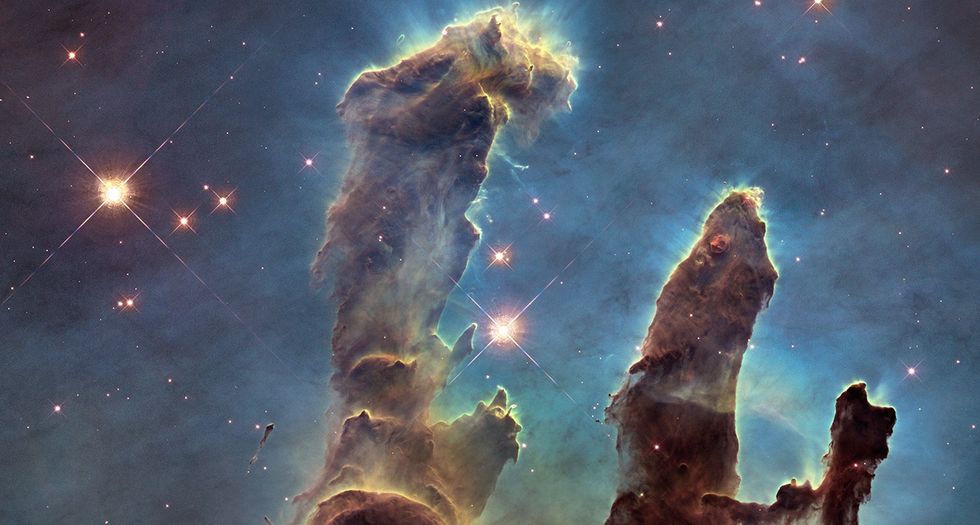
(Image via NASA/ESA/Hubble Heritage Team)

Human beings have made huge leaps in camera technology in the past two decades — and thankfully we're using that technology for more than just selfies.
In 1995, the world was exposed to what would become one of the Hubble Space Telescope's most iconic pictures of deep space: a trio of cold gas columns washed by the light of newborn stars.
The image, from M16, the Eagle Nebula, was quickly dubbed "The Pillars of Creation."
Here's that picture, stitched together from 32 separate images:

Arizona State's Paul Scowen, who along with astronomer Jeff Hester led the original Hubble observations of the Eagle Nebula, recalled the first time he saw the pillars.
“I called Jeff Hester on his phone and said, ‘You need to get here now,’” Scowen said. “We laid the pictures out on the table, and we were just gushing because of all the incredible detail that we were seeing for the very first time.”
On Monday, 20 years after the initial photograph, NASA released new high-definition images of the pillars — see the sparkling shot:

The new image, captured using visible and near-infrared light, opens up a whole new world of details in the shot.
The largest pillar, on the left, is an estimated 4 lightyears — 37,842,113,600,000 kilometers — tall, yet the whole phenomenon is a tiny part of the galaxy around it.
Here's where the Pillars of Creation fit inside the Eagle Nebula.

Scientists speculate the ionizing radiation bathing the pillars shows a glimpse at what our own sun's formation could have looked like.
“That’s the only way the nebula from which the sun was born could have been exposed to a supernova that quickly, in the short period of time that represents, because supernovae only come from massive stars, and those stars only live a few tens of millions of years,” Scowen explained. “What that means is when you look at the environment of the Eagle Nebula or other star-forming regions, you’re looking at exactly the kind of nascent environment that our sun formed in.”
See the side-by-side comparison of the 1995 and 2014 images below, and see the full high-definition image on NASA's website:

On Reddit on Tuesday, commenters marveled at the beauty of the new image.
"I don't really know how to say this, but looking at this picture actually brought a tear to my eye," one commenter wrote. "I don't know that I've seen a photo this gorgeous in my entire life."
"I've never seen the Pillars in this context before," another commenter wrote, noting the pillars' position within the Eagle Nebula. "Something I thought was unimaginably huge is just another small piece of the Cosmos."
Perhaps the most tragically beautiful thing about the pillars: Scientists believe they may have been destroyed by a supernova some 6,000 years ago, but the light showing that destruction hasn't yet reached Earth.
“I’m impressed by how transitory these structures are. They are actively being ablated away before our very eyes. The ghostly bluish haze around the dense edges of the pillars is material getting heated up and evaporating away into space," Scowen said. "We have caught these pillars at a very unique and short-lived moment in their evolution.”
(H/T: Business Insider)
—
Follow Zach Noble (@thezachnoble) on Twitter